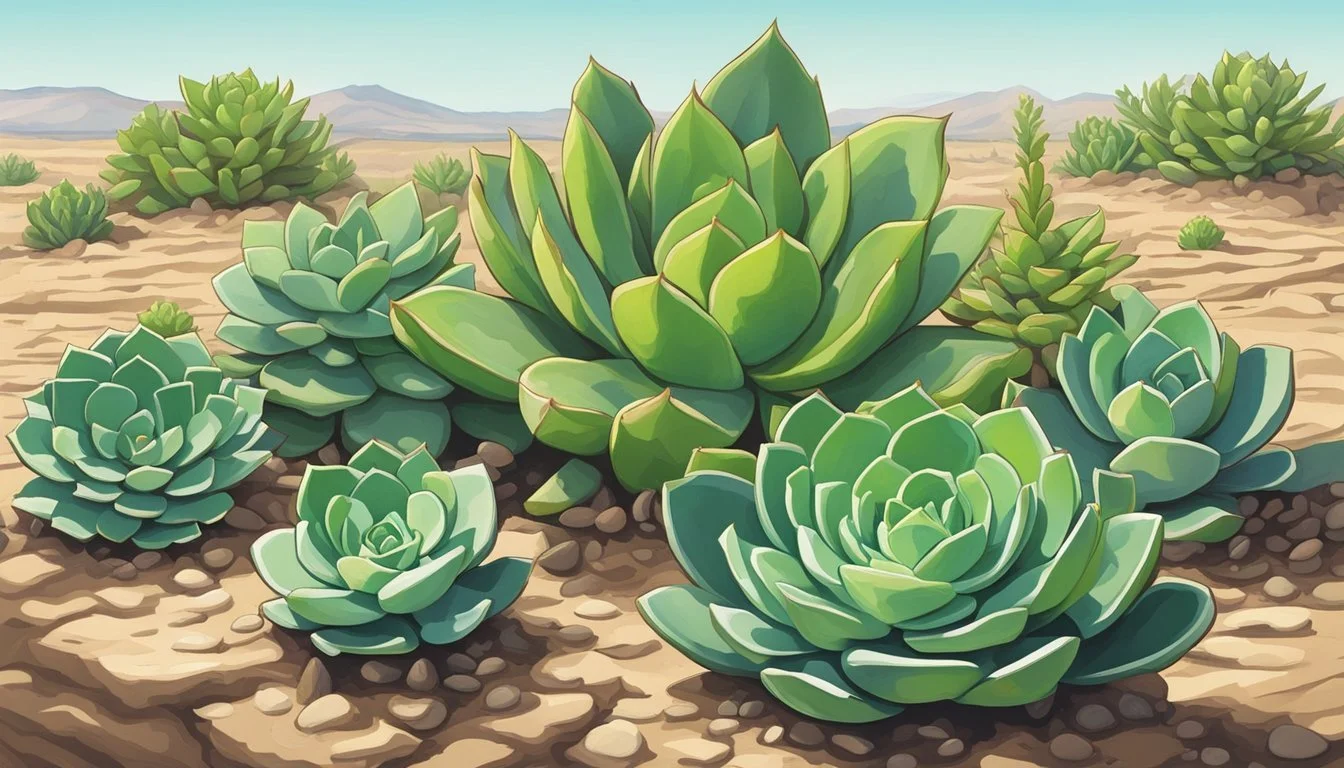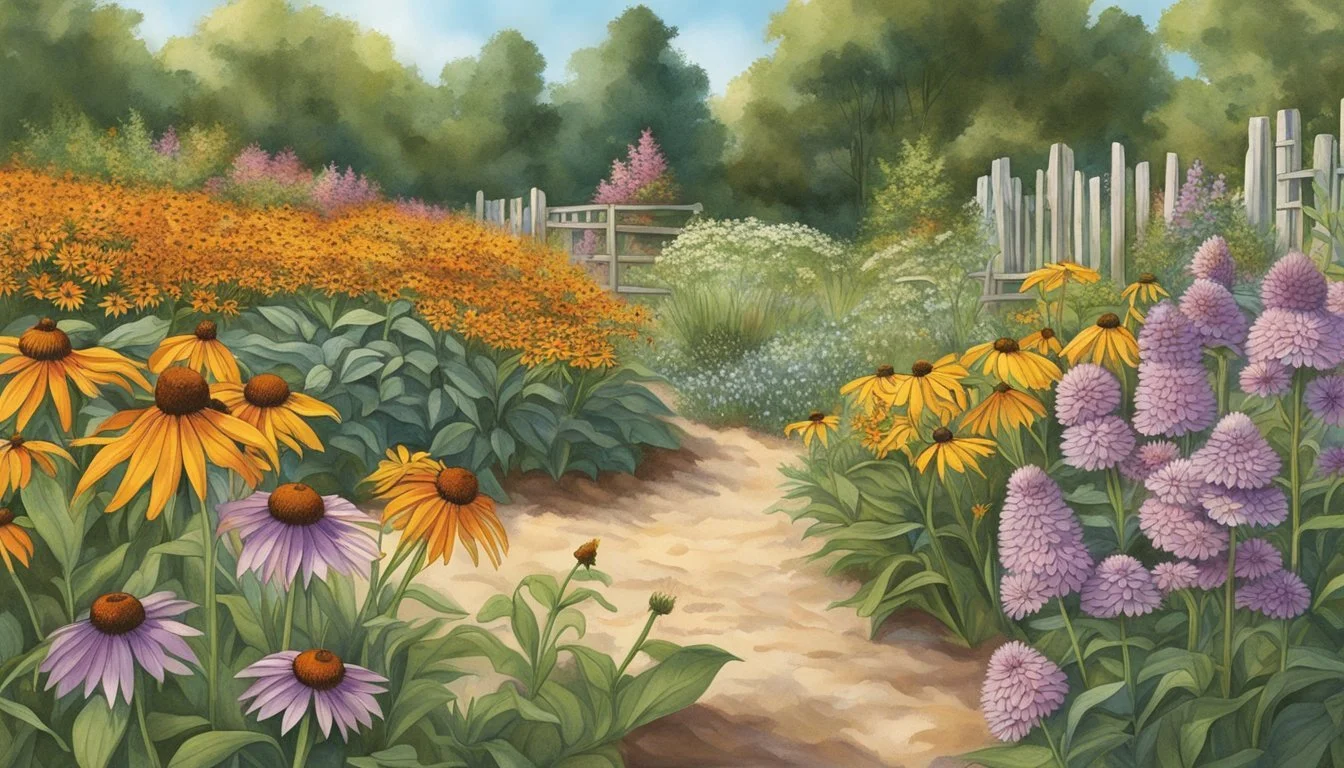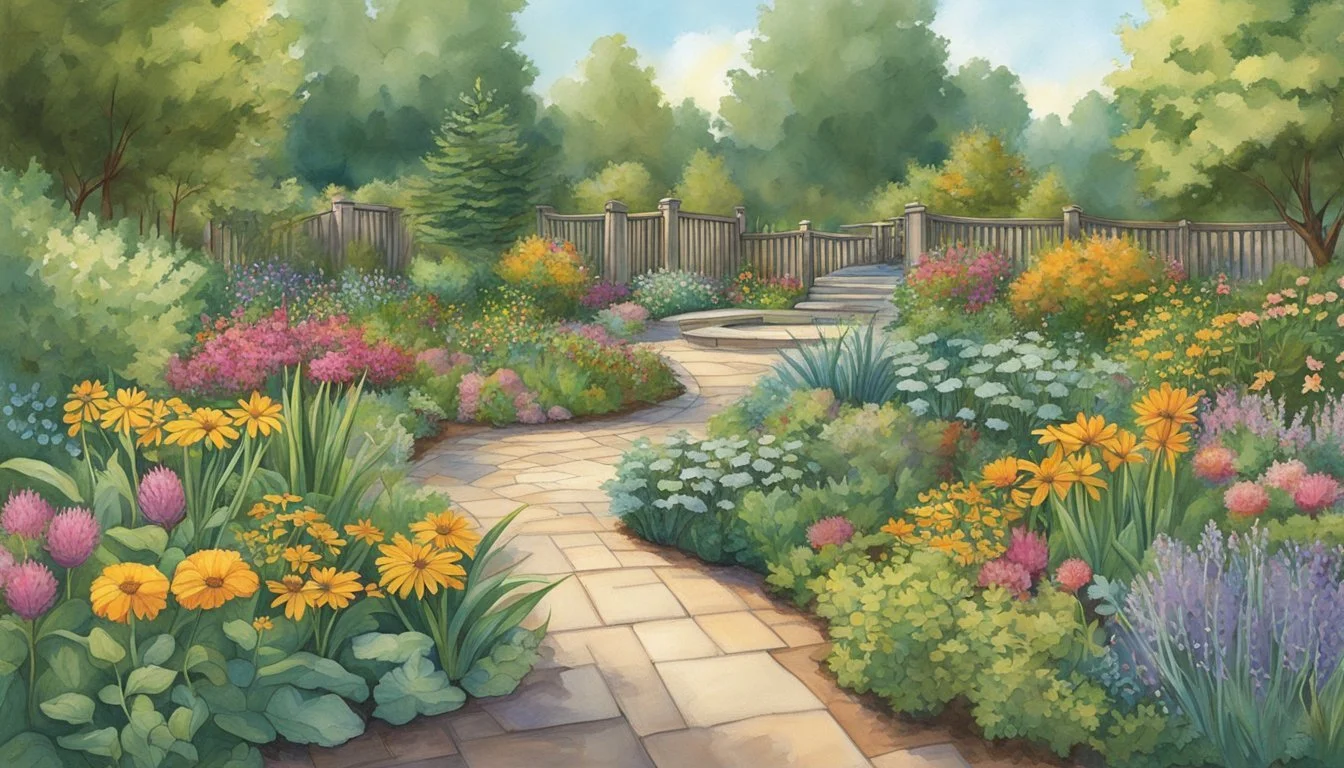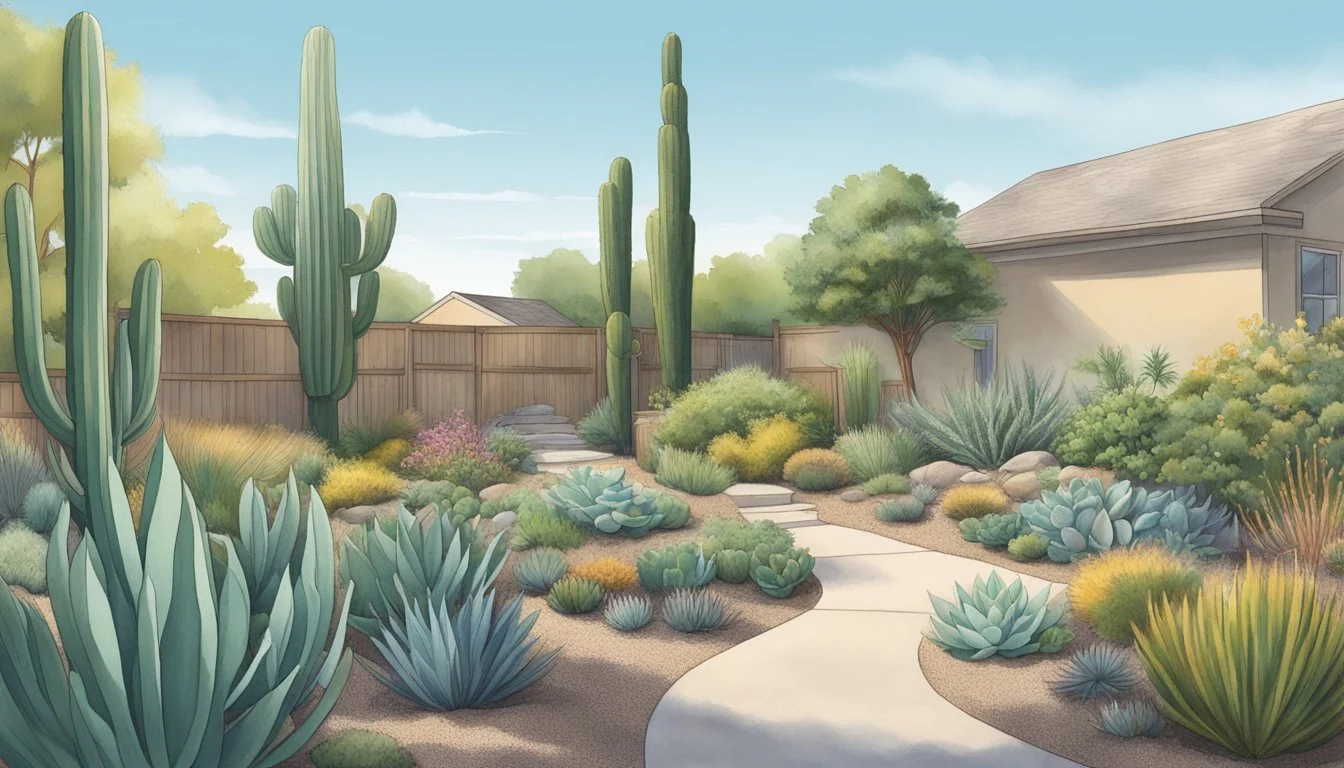Drought-Tolerant Plants in Delaware
Thriving Flora for Arid Climates
Drought-tolerant plants are essential for creating sustainable gardens and landscapes, especially in regions like Delaware where water conservation is becoming increasingly important. These hardy species are adept at thriving in arid conditions, often requiring less water than their thirstier counterparts. By focusing on plant selection for water conservation, gardeners in Delaware can cultivate vibrant gardens that are both ecologically sensitive and horticulturally successful.
In Delaware's varied climate, the choice of drought-tolerant plants includes native species that are adapted to the local environment, reducing the need for extensive irrigation and maintenance. Utilizing plants such as butterfly milkweed and cardinal flower can also contribute to preserving local biodiversity and supporting wildlife. As climate patterns shift and water becomes a more precious resource, the importance of integrating such species into Delaware landscapes grows.
Gardeners considering a water-efficient garden can rely on a variety of resources for guidance. Organizations like the University of Delaware offer expertise on plant selection to maximize water conservation, while the Environmental Protection Agency provides updated recommendations for low water use landscaping. Knowledgeable choices in plant species can lead to a resilient and attractive garden that is well-suited to Delaware's conditions.
Understanding Drought Tolerance
In Delaware, understanding drought tolerance in plants is paramount for sustainable landscaping and ecological preservation. The region's fluctuating climate necessitates the use of native and drought-tolerant species to maintain the local ecosystem.
Defining Drought-Tolerant Plants
Drought-tolerant plants are species that can thrive with minimal water. They are acclimated to the region's weather patterns and often possess adaptations such as deep root systems or waxy leaves to reduce water loss.
Benefits of Drought-Tolerant Landscaping
Landscaping with drought-tolerant plants offers numerous benefits, including reduced water usage and lower maintenance costs. These plants typically require less fertilizer and care, which in turn leads to better water quality in the region.
Challenges of Drought in Delaware
Delaware faces challenges due to poor soils and periodic dry spells. Implementing water conservation measures and selecting the right plants are key to overcoming these obstacles and ensuring the health of the local ecosystem.
The Role of Native Plants in Water Conservation
Native plants are integral to water conservation efforts. They are already adapted to local conditions and support local wildlife, contributing to a balanced ecosystem.
Improving Soil for Drought Resistance
Enhancing soil quality is crucial for drought resistance. Incorporating organic matter can improve the soil's water retention abilities, making the landscape more resilient to drought.
Ecological Impact of Water-Saving Practices
Conservation practices, such as the use of drought-tolerant plants, have a positive impact on the local ecosystem. They help to sustain various forms of life and reduce stress on water resources.
Plant Selection and Landscape Planning
Proper plant selection and landscape planning are critical for establishing a drought-tolerant garden in Delaware. This involves choosing the right species that thrive with minimal water and planning a landscape that supports water conservation.
Choosing Drought-Tolerant Species
When selecting plants for a drought-resistant landscape in Delaware, one should consider native species known for their low water requirements. Native plants such as little bluestem, switchgrass, and eastern red cedar are adapted to the local climate and soil conditions, making them ideal candidates.
For specific suggestions, the University of Delaware provides insights into Plant Selection for Water Conservation, highlighting trees with deep taproots like the Shagbark Hickory, which are particularly drought-tolerant.
Designing Drought-Resistant Landscapes
Designing a landscape that minimizes water use requires planning. Using strategies like grouping plants with similar water needs, creating shade to reduce evaporation, and using mulch to retain soil moisture can greatly enhance a landscape's drought resistance. Additionally, incorporating xeriscaping principles—landscaping designed specifically to reduce or eliminate the need for irrigation—can be beneficial.
Incorporating Drought-Tolerant Shrubs and Trees
For the backbone of a water-wise garden in Delaware, consider drought-tolerant shrubs and trees. Small trees such as the serviceberry and shrubs like the bayberry can withstand dry conditions once established. The Delaware Nature Society offers a guide on Delaware Native Plants that can help gardeners choose plants that will thrive with minimal watering.
Adding Color and Interest with Drought-Tolerant Flowers
It is a common misconception that drought-tolerant landscapes lack color. In fact, many species such as lavender, with its fragrant purple flowers and robust flower spikes, provide visual interest and a splash of color while being well-suited to dry conditions. These plants not only conserve water but also add aesthetic value to the landscape.
Specific Drought-Tolerant Plants for Delaware
In Delaware, selecting the right plants is crucial for garden success, especially when dealing with the region's varying climatic conditions. This section outlines specific drought-tolerant species that thrive in Delaware's environment with minimal water and maintenance.
Delaware Native Plants Overview
Drought tolerance is an intrinsic characteristic of many native plants in Delaware, enabling them to survive in local conditions with little additional irrigation. These species are well-adapted to the regional climate and poor soil conditions, reducing the need for fertilizers and decreasing susceptibility to disease.
Notable Native Species: Witch Hazel, Rough Goldenrod
Advantages: Low maintenance, disease resistance
Recommended Drought-Tolerant Shrubs
Shrubs that can withstand dry periods are essential for a water-efficient landscape.
Drought-Tolerant Shrubs:
Spirea: An easy-to-care-for shrub that requires minimal water once established.
Purple Coneflower: Though not a shrub, this plant offers excellent drought tolerance and brings vibrant colors.
Plants like spirea are optimal for Delaware's conditions, serving both ornamental and practical purposes.
Drought-Tolerant Trees and Their Advantages
Trees not only provide shade but can also be a source of beauty with minimal water requirements when the right species are chosen.
Key Species:
Small, drought-tolerant trees like certain oak species can survive Delaware's hot summers.
Larger shade trees benefit understory plants and reduce irrigation needs over time.
These trees contribute to water conservation and offer a habitat for wildlife.
Flowering Plants That Thrive in Dry Conditions
Flowering plants add aesthetic appeal to gardens while being water wise.
Drought-Resistant Bloomers:
Coneflower and Yarrow: Known for their resilience and attractive flowers.
Geranium: Offers lasting color with minimal water needs.
These plants provide bursts of color and attract pollinators, boosting local ecosystems.
Ground Covers and Grasses for Water Efficiency
Ground covers and ornamental grasses form a living mulch, reducing moisture loss from the soil.
Examples:
Creeping Thyme: Forms a dense carpet that withstands drought.
Sedum: Known for its succulent leaves that store water.
Utilizing plants like sedum is a strategic choice for ground coverage in dry conditions.
Succulents and Other Specialized Plants
Succulents are specialists in water retention, making them standout choices for drought-prone areas.
Key Succulents:
Aloe: Best known for its medicinal properties and water-storing capabilities.
Stonecrop Sedum: A hardy group of succulents that thrive in poor soil with little water.
Incorporating succulents into the landscape can significantly reduce water demands.
Cultivating Biodiversity and Supporting Wildlife
Delaware landscapes benefit greatly from drought-tolerant native plants, which serve as vital components for local ecosystems and wildlife habitats. These plants not only enhance biodiversity but also support various life forms including birds, pollinators, and beneficial insects.
Providing Habitats for Local Birds
Native plants like oaks and sunflowers provide crucial shelter and food sources for local birds. Tall grasses and shrubs offer nesting sites, while seed-bearing flowers and fruit-producing trees ensure a steady food supply, fostering a healthy avian population.
Attracting Pollinators and Beneficial Insects
Choosing plants like Echinacea purpurea or purple coneflower creates an inviting environment for pollinators. Lavender and artemisia, being drought-resistant, also attract beneficial insects that help with pest control and pollination, boosting the overall health of the garden.
Native Plants and Their Role in Ecosystems
Incorporating native plants such as butterfly weed and milkweed species is essential in supporting monarch butterflies and other native species. These plants are well-adapted to the local ecosystem and require less maintenance, making them an ideal choice for sustainable landscaping.
Non-Invasive Plant Choices to Protect the Ecosystem
To protect Delaware's ecosystem, it's critical to select non-invasive plants. Non-invasive species help maintain the local ecosystem balance, preventing issues such as loss of native biodiversity and habitat alteration.
Plants Specifically Attracting Butterflies and Bees
Butterflies and bees are vital pollinators in the ecosystem. Planting species like milkweed and butterfly weed specifically caters to these insects, providing nectar and fostering their life cycle stages, thus enriching the local biodiversity.
Practical Advice for Homeowners
To cultivate a thriving home landscape in Delaware, it's essential to choose the right plants and care approaches. Drought-tolerant species, sustainable water use, and low-maintenance strategies form the cornerstone of an eco-friendly garden.
Low-Maintenance Landscaping Strategies
For homeowners seeking to minimize garden upkeep, selecting low-maintenance and drought-resistant plants suited to Delaware's coastal plain is key. Incorporating native plants that are well-adapted to the local ecosystem reduces the need for water and fertilizer. Consider converting areas of water-thirsty turf grass to native groundcovers or shrubbery that require less maintenance.
Dealing with Drought and Insect Problems
Drought-tolerant plants generally possess inherent defenses against dry conditions and certain pests. Hardy species that are resistant to local disease and insect problems will thrive with minimal intervention. It's important to monitor plants for signs of stress and to adopt integrated pest management strategies that minimize harm to the local ecosystem.
Selecting Plants from Local Nurseries
Patronizing local nurseries when choosing plants ensures that the selections are ideal for Delaware climates and often more resistant to local pests. These nurseries offer varieties that are well-suited to the coastal plain, contributing to water conservation and lower maintenance requirements in home landscapes.
Caring for Drought-Tolerant Plants
While these plants are designed to survive with less water, they still require appropriate care, especially during establishment. Regular but infrequent deep watering encourages deep root growth, which is essential for drought resistance. Minimize the need for additional water and fertilizer by mulching and choosing plants that match the garden's existing conditions.
Tips for Sustainable Water Use
Homeowners can significantly enhance water conservation by capturing rainwater with barrels and designing landscapes that direct water flow to plants. Drip irrigation systems deliver water directly to the roots with minimal waste, and implementing a watering schedule based on weather conditions rather than a fixed routine can further reduce water usage.
Enhancing the Delaware Landscape
In Delaware, the focus on drought-tolerant plants contributes significantly to conservation efforts and the astute landscaping choices that foster a sustainable environment. These initiatives are crucial for maintaining local ecosystems and reducing water usage.
Community Initiatives and Public Gardens
Delaware's community initiatives play a pivotal role in promoting drought-tolerant plants. They educate residents on the importance of adopting sustainable landscaping practices that align with local conservation goals. Garden for Wildlife, for example, encourages the use of native plants that are resilient and require less water, thus supporting local wildlife and contributing to water conservation.
Public gardens in Delaware serve as living examples of how drought-tolerant landscaping can be both functional and visually appealing. Institutions like the University of Delaware offer an extensive list of Plants for a Livable Delaware that are alternatives to invasive species and are conducive to creating more sustainable landscapes. These public spaces provide a blueprint for homeowners and businesses looking to adapt to the region's climate while engaging in responsible stewardship of their local environment.
Frequently Asked Questions
In Delaware, selecting the right plants for a drought-tolerant garden can contribute to water conservation and create a resilient landscape. These questions address native options that thrive in dry conditions.
What are some recommended native plants for creating a drought-tolerant garden in Delaware?
Native plants such as Little Bluestem and Butterfly Weed are excellent options for a drought-tolerant garden in Delaware. They are adapted to the local climate and require less water once established.
Which native flowers thrive best in the dry conditions of Delaware?
In Delaware's dry conditions, Black-eyed Susans and Eastern Purple Coneflowers are native flowers that thrive. These species are known for their ability to withstand drought and attract pollinators to the garden.
What shrubs are well-suited to Delaware's climate and require minimal watering?
Shrubs such as the Summersweet Clethra and Bayberry are well-suited to Delaware's climate. These shrubs handle dry spells well and require minimal watering once they are established.
Can you suggest some drought-resistant ground covers that are indigenous to Delaware?
Bearberry and Creeping Phlox are indigenous ground covers that are drought-resistant and prosper in Delaware's varied conditions.
Where can I find drought-tolerant Delaware native plants for purchase?
Garden centers specializing in native plants can be a good place to find drought-tolerant species. The Delaware Native Plant Society also periodically holds plant sales offering an array of native and drought-tolerant options.
How can I incorporate native evergreens into a water-wise landscape in Delaware?
Native evergreens such as Eastern Red Cedar and American Holly can be incorporated into a water-wise landscape in Delaware. They provide year-round interest while being adapted to drier conditions.









